
There’s soooooooo much bourbon out there right now that it can’t all be great, “the best,” or… even very good. That’s just math. I know that sounds flippant, but every major distillery has a few expressions that lurk on the bottom shelf in plastic bottles with screwtop caps. Because they’re not going to just dump a barrel of whiskey into the gutter, right? So they blend it out into the cheap stuff.
It stands to reason then that just as there are the best bourbons from particular distilleries, there are also the worst bourbons from those same distilleries. It’s a simple ying and yang, Superman and Zod, Rock and Smith, or in bourbon terms Eagle Rare BTAC and Benchmark (more on that below).
To put a finer point on it, I’d be lying if I said I loved every bourbon I tasted. Some (a lot sometimes) are hot trash. Generally, I log those and move on without slagging them off because it’s pretty obvious that a $7 plastic bottle of “bourbon” isn’t going to be something anyone is going to line up to buy. That said, the quality between a big Kentucky distillery’s standard expression and the stuff they put in those plastic bottles can be massive. And just because a bottom shelf bottle is made by, say, Willett or Heaven Hill or even Buffalo Trace does not mean it’s worth your time or money.
To that end, I’m naming ten bottles of Kentucky bourbon that I think you should avoid. Forever. Are these the worst bourbons ever? Nah. They’re just not very good — maybe a little plasticky or watery — and also all come from huge distilleries that make way better expressions for just a little bit more cash. Sometimes only five to ten dollars more. And why be disappointed (or even disgusted) when you can be satisfied for just a few bucks more? You’ve earned good whiskey, so let’s get into which bottles to skip from the big Kentucky distilleries!
Also Read: The Top 5 UPROXX Bourbon Posts Of The Last Six Months
- The 50 Best Bourbon Whiskeys Of 2021, Ranked
- Every Winning Bourbon From Our 2021 Taste Tests, Blind Tasted And Re-Ranked
- The 100 Best Whiskeys Our Head Drinks Writer Tasted In 2021
- We Blind Tasted A Whole Bunch Of $30-60 Bourbons To See If Any Could Beat Weller
- The Best Ten-Year-Old Bourbon Whiskeys, Tasted Blind And Ranked
Barton 1792 Distillery — Kentucky Tavern

ABV: 40%
Average Price: $8
The Whiskey:
Barton 1792 Distillery — part of the Sazerac group of distilleries — is renowned for white labeling, contract distilling, and putting out both amazing and amazingly cheap bourbons. This expression is the bottom rung in bottle form. Barton doesn’t disclose the mash bill but it is aged at least four years. Beyond that, it’s cut down to 80 proof with plenty of Kentucky limestone water and bottled in plastic.
Tasting Notes:
Water and plastic are what you get on the nose and on the palate. While the plastic fades away, the wateriness imparts flavors of muted vanilla, banana chip, and maybe a hint of caramel soda. The palate is largely the same with a sense of watered-down apple juice, a hint more of that vanilla, some alcohol burn (almost inexplicably), and a touch of chocolate-covered cherries dipped in water.
Bottom Line:
I probably wouldn’t even mix this with Coke. It’s just so watery.
The Bottle To Get Instead:
For $13, you can get some Very Old Barton from the same distillery. It’s aged two more years and only proofed down to 100 proof. While it’s not mind-blowingly better, it’s miles ahead of Kentucky Tavern and that watered-down nature is gone — allowing the flavor profile to shine through.
Willet Distillery — Johnny Drum Black Label
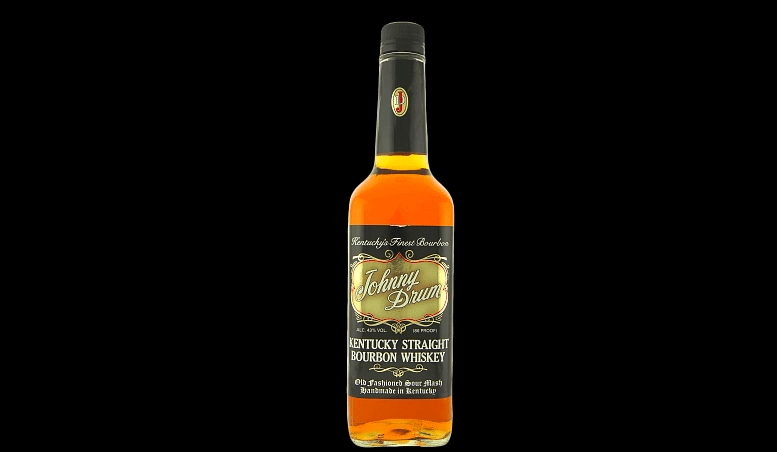
ABV: 43%
Average Price: $17
The Whiskey:
This is an entry point whiskey from Kentucky Bourbon Distillers, commonly known as Willett. The juice is a bourbon blend that’s a minimum of four years old. It’s then cut down to a very accessible 86 proof with that local limestone water.
Tasting Notes:
The nose is a mix of yellow masa, damp cedar, wildflowers, and a hint of vanilla extract next to fresh mint leaves. The palate is very thin but carries a fair amount of buttery caramel, a dash of black pepper, a hint of cinnamon, and more of that soft cedar. The finish is pretty much what you’d expect for a bottle under $20 with a quick, watery fade, leaving you with the distant and vague idea of caramel, masa, and sweet oak… those features could be a leftover from the nose more than the actual taste.
Bottom Line:
This is fine on the front end but completely disappears on the back end/finish into a watery mishmash.
The Bottle To Get Instead:
Sticking with Willett, Old Bardstown Estate Bottled 101 — for $28 — is a massive jump in quality, taste, and overall usefulness. It’s a really good mixing bourbon that also works fine in a highball or even on the rocks. It’s versatile, cheap, and damn good for what it is.
Buffalo Trace Distillery — Benchmark Old No. 8 Brand
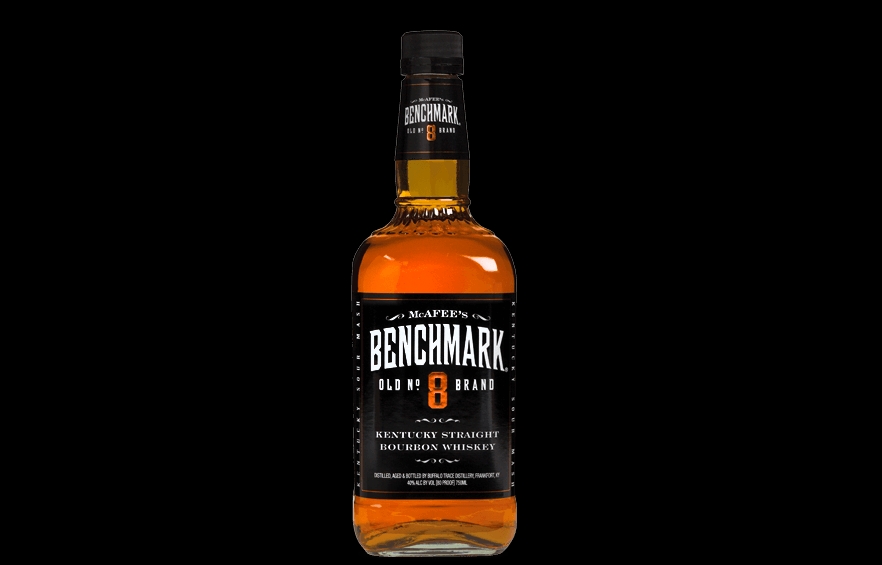
ABV: 40%
Average Price: $10
The Whiskey:
The juice in this bottle is from Buffalo Trace’s Mash #1, which has a scant amount of barley and rye next to mostly corn. This is the same mash that’s used for bigger hitting brands like Eagle Rare, Stagg, and E.H. Taylor. In this case, this is a standard straight bourbon that’s sort of like a base-level Eagle Rare, in theory, but from barrels that didn’t make the cut and were then proofed all the way down for bottling.
Tasting Notes:
Faint lemon candies and honey lead to an old vanilla wafer on the nose but not much else. The taste is “classic” bourbon with watery hints of leather, spice, and cornmeal next to vanilla extract, caramel, and old buttered popcorn. The end is very faint and almost vodka-like with a tapwater vibe.
Bottom Line:
This is just a cheap and easy bourbon that’s good for mixing with Coke and not much else.
The Bottle To Get Instead:
The easy path is to just say, “get the Eagle Rare 10 for $50” and be done with it. But I’d argue that Benchmark Bonded — for $20 — is such a big jump in quality and flavor that you should try that first. The Bonded version basically takes everything that’s just a whisper in the above version and lets it shine while layering in deeper flavor notes.
Heaven Hill Distillery — Henry McKenna
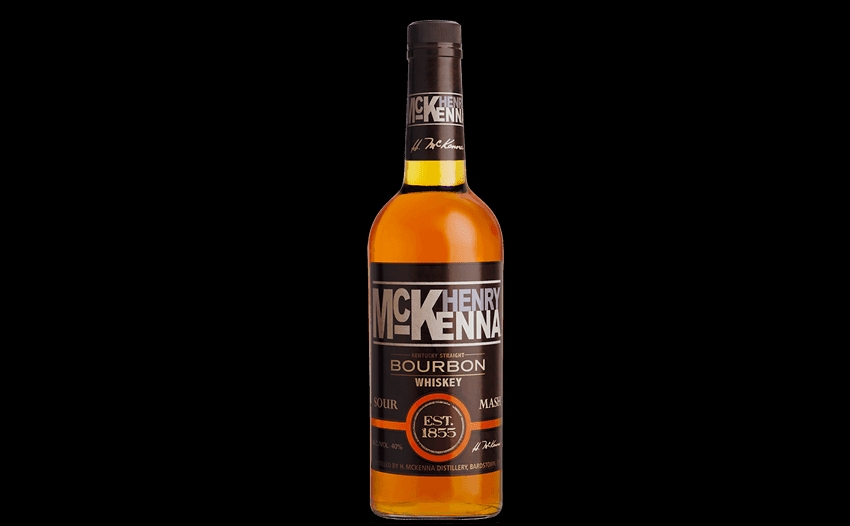
ABV: 40%
Average Price: $11
The Whiskey:
This Heaven Hill bourbon is standard bourbon made with its iconic mash bill of 78 percent corn, 12 percent malted barley, and ten percent rye (the same as Evan Williams and Elijah Craig). The juice spends four years in barrels before it’s blended out into this expression and proofed way down to 80 proof.
Tasting Notes:
“Light” is what comes to mind on the nose with a soft cream soda, a touch of caramel, and a little bit of corn husk. The palate follows suit with simple notes of vanilla, caramel, and dried corn dominating the palate. The finish is pretty watery — it kind of reminds me of hose water on a hot day — with the same beats for vanilla-caramel-corn-and-wood barely peaking in over the proofing water.
Bottom Line:
This is light but also simple. I’m not mad at it but don’t really see the point either.
The Bottle To Get Instead:
Just get an Evan Williams White Label. Yes, it’s a shooting and mixing whiskey but it’s so much more complex than this and only costs about $5-$7 more.
Old Forester — Old Forester 86 Proof
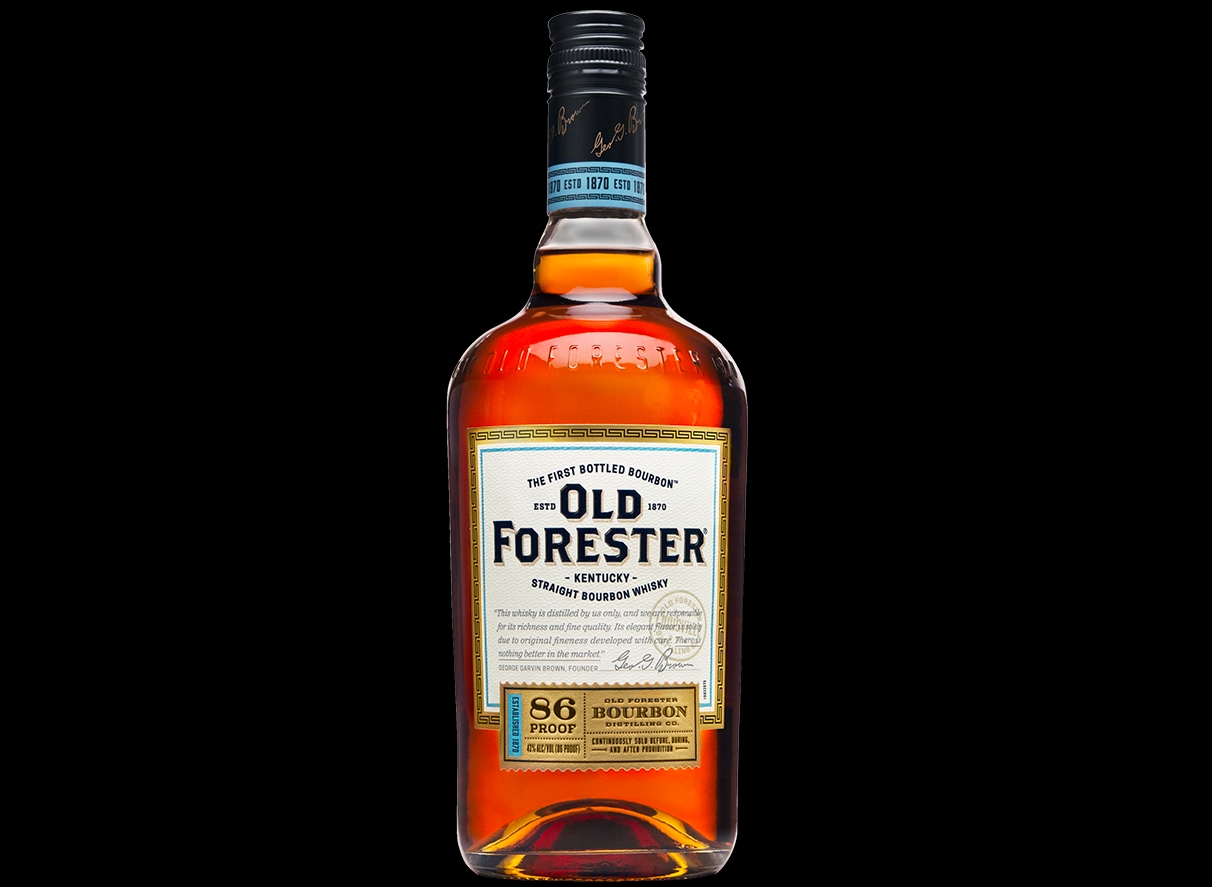
ABV: 43%
Average Price: $17
The Whisky:
Old Forester’s 86 Proof is a very straightforward whisky. The mash bill is mid-range rye with 18 percent of the grain next to 72 percent corn and a final ten percent of malted barley (the same bill for all their bourbon). The juice is aged in a fairly heavily charred oak barrel for an undisclosed amount of time (the youngest barrel is likely older than four years). The whisky is then blended and proofed down to a very manageable 86 proof.
Tasting Notes:
This has a big nose of vanilla-cherry tobacco with a hint of fresh mint lurking in the background next to a whisper of floral honey cut short by a slightly tinny nature. The taste has a grilled corn-on-the-cob vibe with a hint of pepper and butter next to small doses of citrus and soft oak that’s all a little muted by an “alcohol” burn. The end is long and leaves you with that boozy burn and a touch more of that sweet corn and butter.
Bottom Line:
This is getting better, all things considered. Instead of watery muted notes, this suffers from a bit of a burn that overpowers what’s in the whiskey. Still, this is perfectly serviceable as bourbon and Coke whiskey but not much else. I guess I’d also take a shot of this as a beer back in a pinch… but I wouldn’t be hyped about it.
The Bottle To Get Instead:
I think you can skip Old Forester 100 (which is fine for cocktails) and go straight to Old Forester 1897 Bottled-in-Bond. It’s only $49 and is a great example of the power of this brand/distillery/team.
James B. Beam Distillery — Old Crow
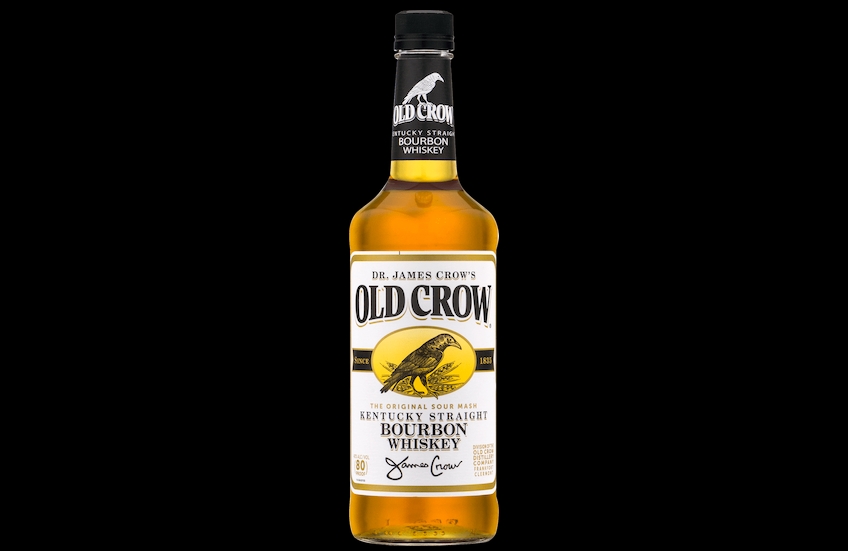
ABV: 40%
Average Price: $17 (1.75 liter bottle)
The Whiskey:
This is a classic bourbon that became part of Jim Beam about 30-odd years ago. Until then, it was famed for being the drink of choice of President Grant, back in the 1870s — which gave it a lot to hang its hat on as a brand. The juice in the bottle is a year younger than a typical Jim Beam bourbon — so three-ish years — and it is cut way down to 80 proof for bottling.
Tasting Notes:
Wow, this is thin on the nose. There are hints of vanilla, overcooked popcorn, caramel, and what feels like fresh slices of Wonder Bread. The sip is almost invisible on the tip of the tongue and very watery but does have echoes of sweet cherry candy, caramel apples, and vanilla extract in there but you really have to dig around for them. Those notes almost immediately disappear into the watery nature of the sip with no discernable finish but maybe that Wonder Bread dipped in tepid water.
Bottom Line:
This is the first bottle of whiskey I ever considered pouring down the drain. I didn’t, but I have no idea what to do with it otherwise.
The Bottle To Get Instead:
Literally any other bottle made at Beam from any of their brands, or just grab a Jim Beam Black Label. It’s like it’s in an entirely different spirits category than Old Crow. Plus, Jim Beam Black Label should only cost you around $19.
Wild Turkey — Wild Turkey 81 Proof
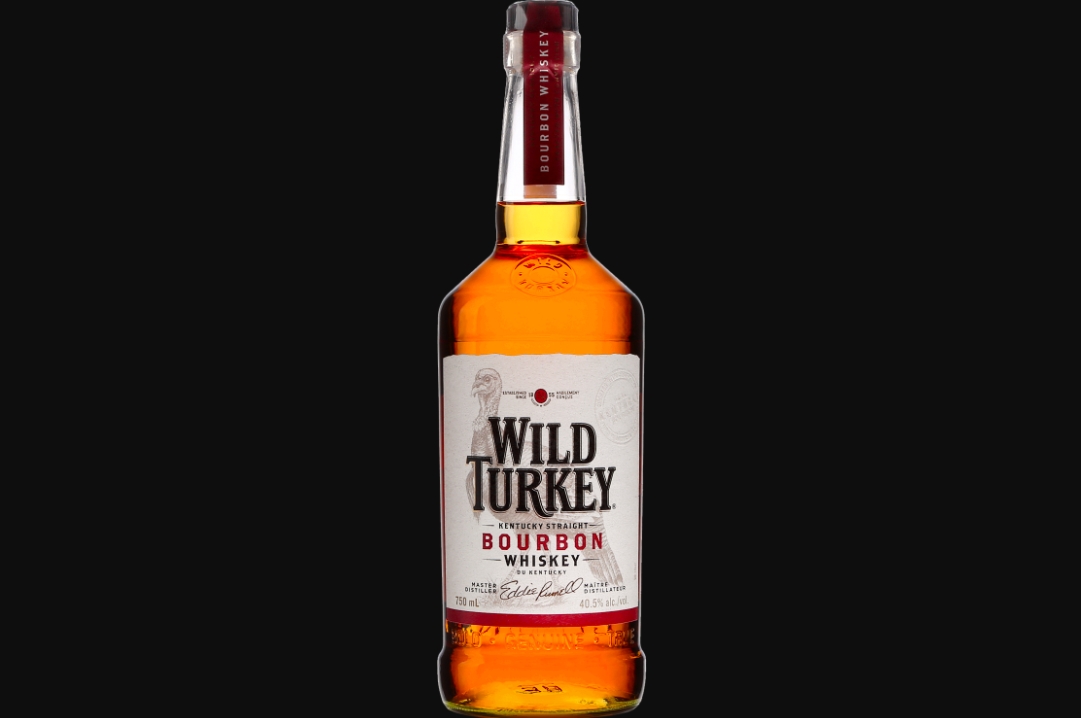
ABV: 40.5%
Average Price: $18
The Whiskey:
This expression was devised as a lower-proof bourbon that’s a pure workhorse whiskey. That means it’s made for mixing but you can sip it if that’s your jam. This universality is achieved by letting the juice rest in deeply charred oak for six to seven years before it’s cut down to 81 proof for bottling.
Tasting Notes:
There’s a mix of mild spice, bitter oak, ripe stone fruits, creamy vanilla, and an echo of salted caramel with little to no watery presence. The taste delivers on that and expands into peach cobbler territory with mild hints of vanilla and brown sugar syrup with baking spices. The end is another left turn with a dusting of dark chocolate with a hint of honey as the water kicks in a fades out the stone fruit, spice, and oak pretty quickly.
Bottom Line:
This is one of the best “skippable” whiskeys on this list. It’s perfectly fine but not the best representation of Wild Turkey by any stretch. Still, if you do come across this, it is a great mixer — I can’t deny that.
The Bottle To Get Instead:
This is easy, Wild Turkey 101 all day — it’s only $20. While 101 has been erroneously slagged off by a generation of adults who didn’t know how to handle their Turkey in college, this is still one of the most legitimate cheap bourbons on the market. It’s also an essential cocktail mixing bourbon for any bar cart.
Check out our full review here.
Four Roses — Four Roses Bourbon
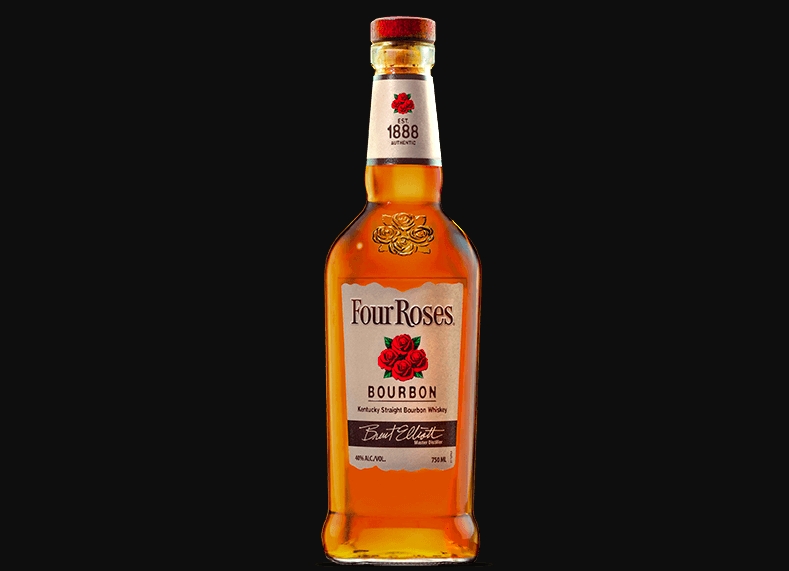
ABV: 40%
Average Price: $19
The Whiskey:
This introductory juice from Four Roses is a blend of all ten of their whiskeys. The barrels are a minimum of five years old when they’re plucked from the warehouses, blended, brought down to 80 proof, and bottled.
Tasting Notes:
There’s a bit of steeliness to the nose that mellows hints of dried florals, apple, and a touch of honey and spice. The taste doesn’t veer too far from the nose as the apple turns more honey, with mild vanilla and more honeyed sweetness. The end is subtle, short, watery, and steely with a minor touch of green oak, spice, fruit, and one more dash of honey.
Bottom Line:
The steeliness of this is hard to get past sometimes. That said, that note completely goes away when you mix this into highballs or bourbon and Cokes, where it shines the most.
The Bottle To Get Instead:
Four Roses Small Batch is such a small step up in price (only $28) but a huge step up in taste. The bottle works wonders in a cocktail and is perfectly fine for an on the rocks sip of whiskey.
Lux Row — David Nicholson 1843
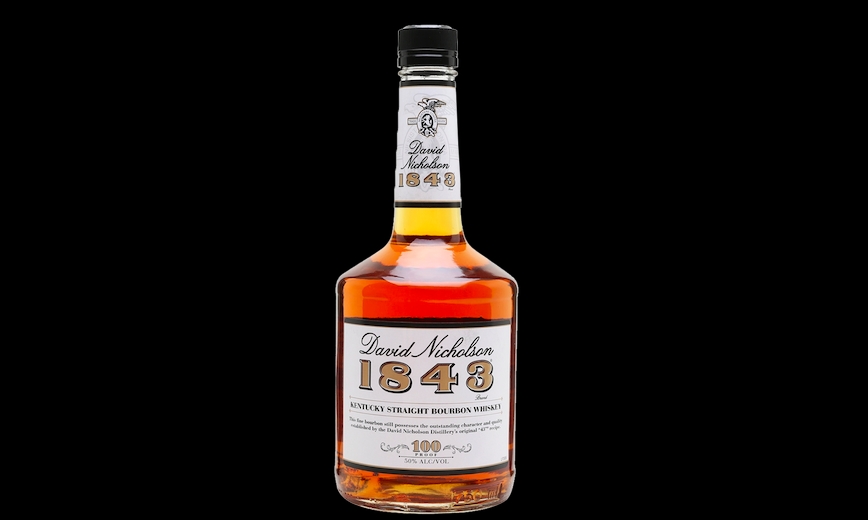
ABV: 50%
Average Price: $23
The Whiskey:
This bourbon from Lux Row is a high-rye mash that’s contract distilled partially off-site and partially made at the distillery. The whiskey spends around four to five years mellowing before it’s blended, proofed down, and bottled.
Tasting Notes:
The nose is all about the nuts and fruit with a trail mix vibe next to more standard notes of vanilla, caramel, and oak. The palate has a hint of alcohol burn from the jump with plenty of dark spices and dry peanut shells popping in before the burn takes over on the mid-palate. The burn carries through to the finish, muting the vanilla, peanut, caramel, and oak.
Bottom Line:
This is “hot” in that it tastes like burning instead of “hot” notes from spice, wood, or tobacco. Overall, it’s fine if you’re making a bourbon and Coke.
The Bottle To Get Instead:
I’d go with another Lux Row mainstay, Ezra Brooks 99. It’s only $5 more than David Nicholson and just much deeper while also being more approachable and mixable.
Bulleit — Bulleit Bourbon
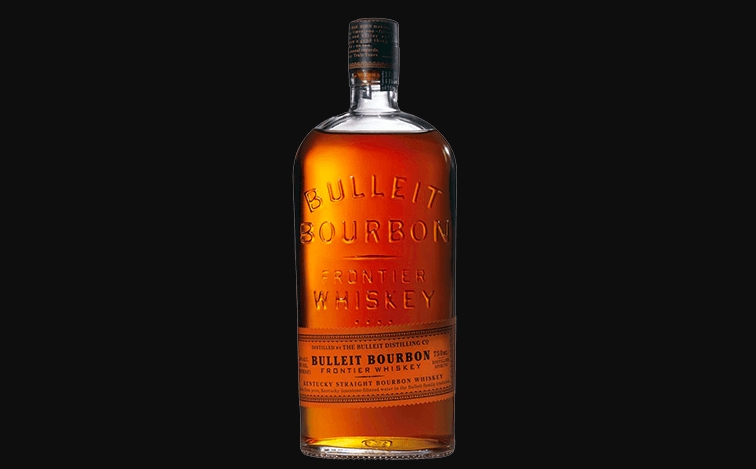
ABV: 45%
Average Price: $23
The Whiskey:
This whiskey embraces a high-rye mash bill that’s comprised of 68 percent corn, 28 percent rye, and four percent malted barley which Bulleit has been distilling themselves since 2017. The juice is then rested for six years before blending, cutting down to proof, and barreling, which, in turn, means that there’s still a little sourced juice in the mix here.
Tasting Notes:
This has a very “classic” and “spicy” bourbon nose with clear hints of vanilla, oak, spice, and wood. The spice is squarely in the cinnamon category, with creamy vanilla, warm tobacco, and a hint of orchard fruit lurking in the background. The end is warm but not hot. The oak, dark spice, brown sugars, and whisper of corn linger on your senses through the medium finish.
Bottom Line:
This is fine for what it is, a decent cocktail bourbon. It’s also a pretty good shooter without too much burn but… not much else. Unless you’re looking for a run-of-mill bourbon.
The Bottle To Get Instead:
Given Bulleit’s dismal history with the LGBTQ and BIPOC communities, I’m not going to recommend any other expression from the brand. If you want to stick with Diageo, however, then I’d recommend getting yourself some George Dickel Bottled-In-Bond for $40. It’s stellar whiskey, albeit from Tennessee and not Kentucky.
